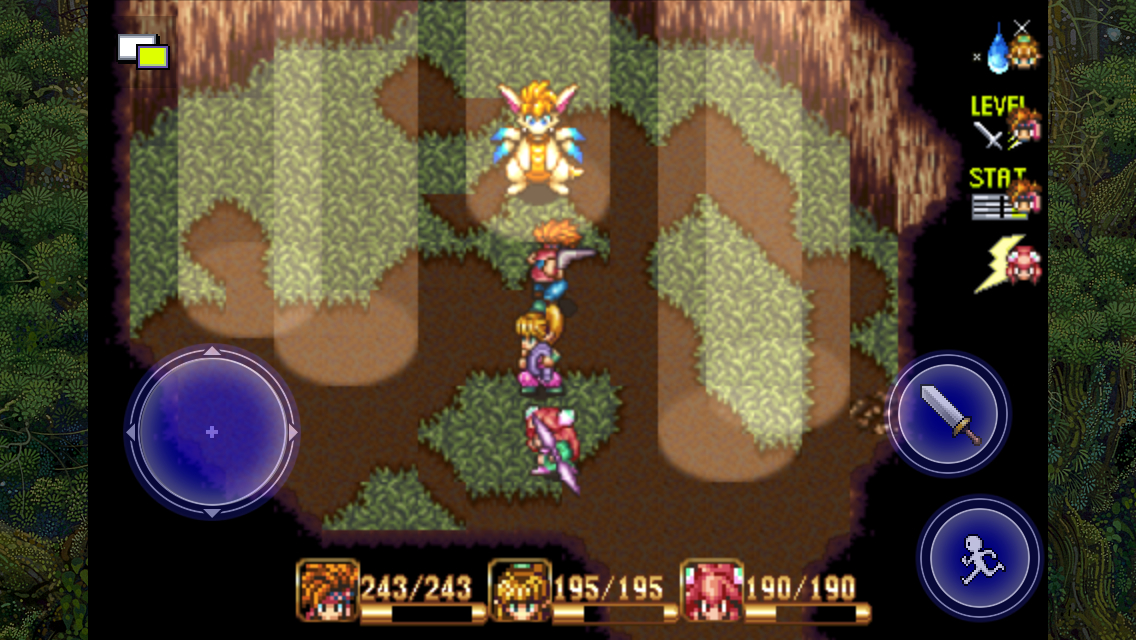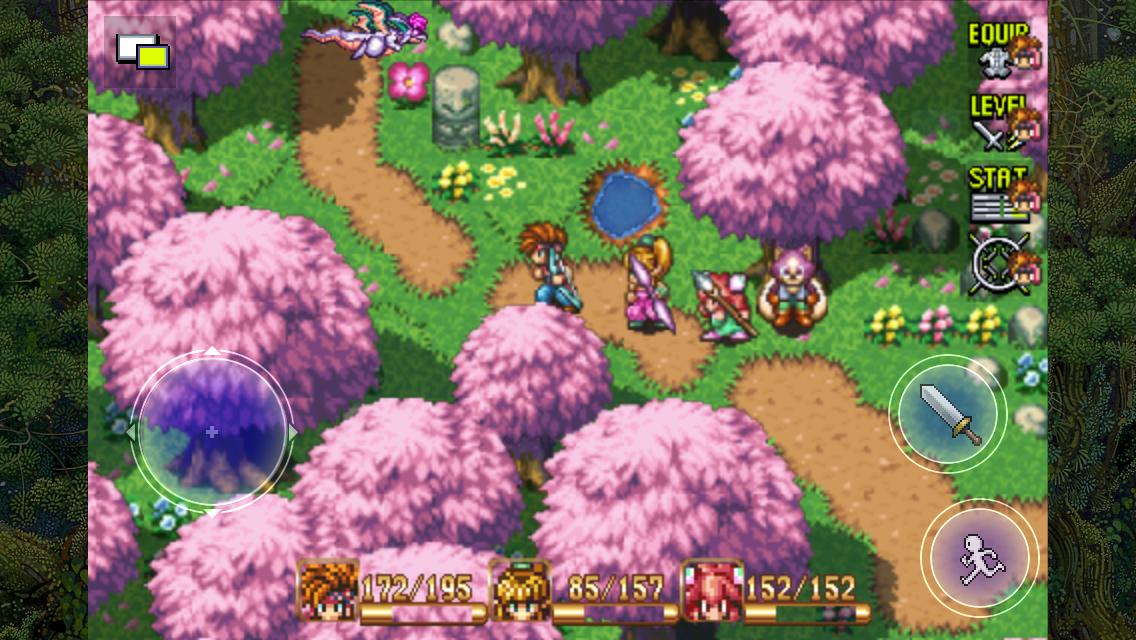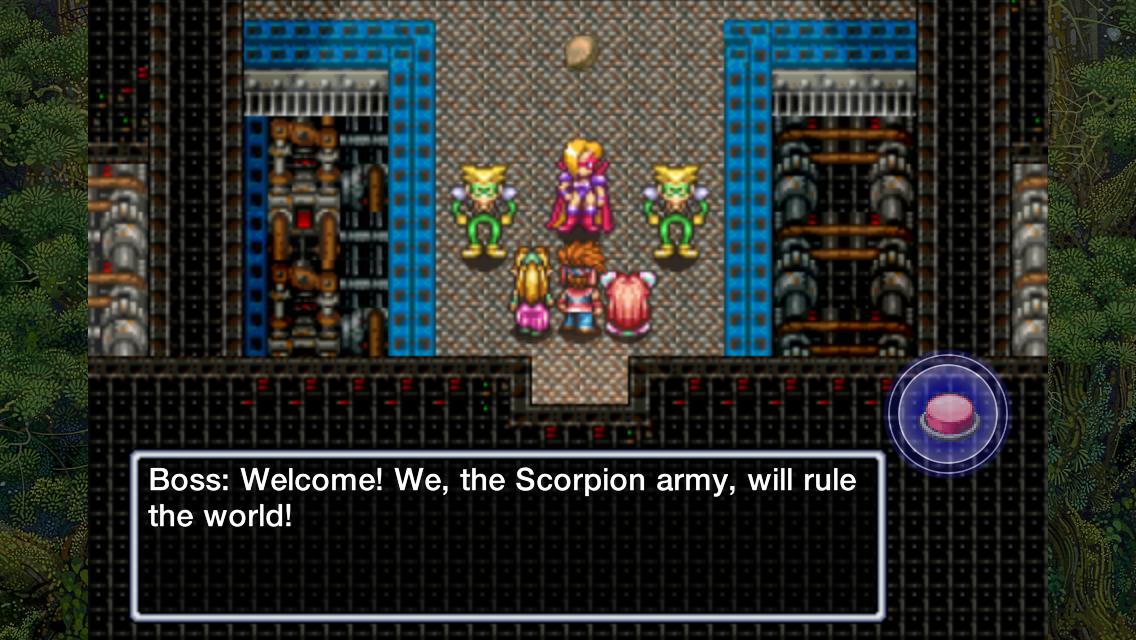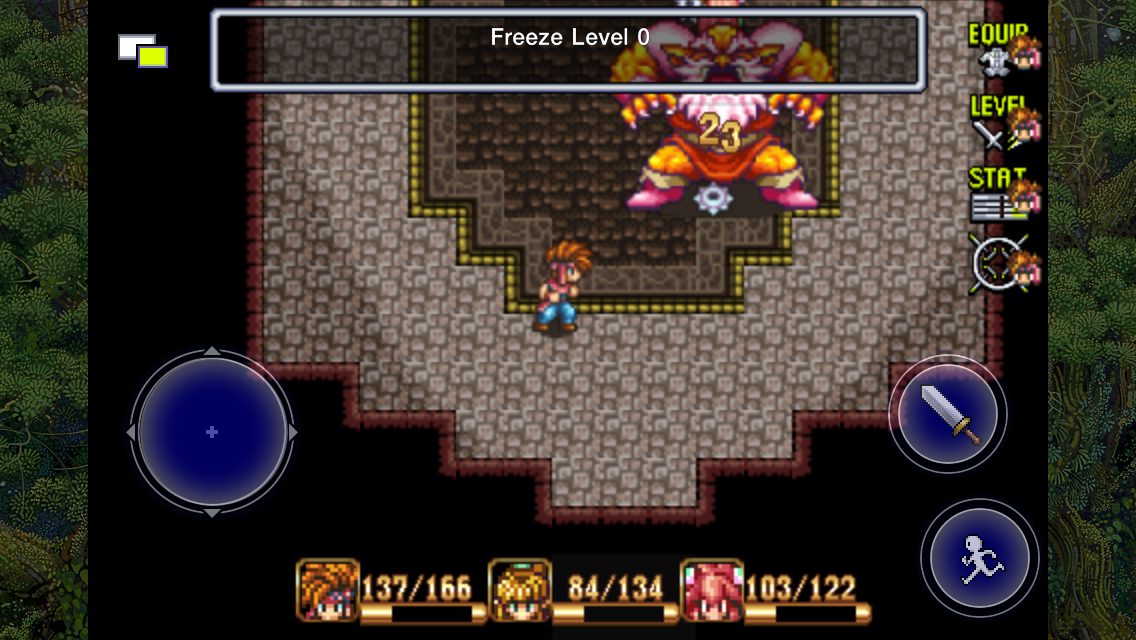 Hello, gentle readers, and welcome back to RPG Reload, the weekly feature where we spend a lot of time with magical swords and sprites of all varieties. Each week, I reload an RPG from the App Store’s past for a little reflection, revisiting, or even just to do a deeper dig than what the scope of our usual reviews cover. I like all kinds of RPGs, and I hope you do, too, so I try to grab a varied selection to avoid leaning too hard on any particular style or subgenre. Just in case I miss something, however, once per month I’ll be playing and writing about a reader-selected RPG. The next reader’s choice is… hey, it’s next week in RPG Reload File 008, where I’ll be playing Lunar Silver Star Story Touch ($9.99). How about that? Democracy in action! With that selection locked in, that means you can start voting for the next reader’s choice, which will be RPG Reload File 013. Just leave your vote in the comments below or in the Official RPG Reload Club thread in our forum.
Hello, gentle readers, and welcome back to RPG Reload, the weekly feature where we spend a lot of time with magical swords and sprites of all varieties. Each week, I reload an RPG from the App Store’s past for a little reflection, revisiting, or even just to do a deeper dig than what the scope of our usual reviews cover. I like all kinds of RPGs, and I hope you do, too, so I try to grab a varied selection to avoid leaning too hard on any particular style or subgenre. Just in case I miss something, however, once per month I’ll be playing and writing about a reader-selected RPG. The next reader’s choice is… hey, it’s next week in RPG Reload File 008, where I’ll be playing Lunar Silver Star Story Touch ($9.99). How about that? Democracy in action! With that selection locked in, that means you can start voting for the next reader’s choice, which will be RPG Reload File 013. Just leave your vote in the comments below or in the Official RPG Reload Club thread in our forum.
We’ve been on the Western game kick for the last few weeks, but this week, we’re heading back to the land of the rising sun with Square Enix’s Secret Of Mana ($7.99). If you can believe it, this game is just about to turn 21 years old in North America, having launched on the Super NES in early October of 1993. While it’s not Square’s first action RPG, it’s probably their most well-known outside of Kingdom Hearts, as well as the first to carry the Mana name. A lot of sequels followed, but it’s arguable whether any of them were able to capture exactly what this game did well. It almost feels like the game’s quality was an accident, and given all the craziness that went on in its development, that might not be terribly far from the truth. The legends around this game’s development make for nearly as entertaining a story as the plot contained within.
In Japan, the game’s title is Seiken Densetsu 2, or Legend of the Holy Sword 2, and is a sequel to the Game Boy Seiken Densetsu, known to English gamers as Final Fantasy Adventure. That’s not how it started, however. Originally developed under the working title Maru Island, it was meant to be a launch title for Nintendo’s CD-ROM add-on to the Super NES, and perhaps more intriguingly, it was a collaboration with famed artist Akira Toriyama, of Dragon Quest ($2.99) and Dragon Ball fame. When it became known that the CD-ROM was not going to happen, the project was largely scrapped, and that collaboration with Toriyama would have to wait for another day. From this failed start, two cartridge-based projects were born, one which would become Chrono Trigger ($9.99), and the other, Secret of Mana. Some say this is why there is a resemblance between Randi and Primm of Mana and Crono and Marle of Chrono Trigger, but there’s no solid evidence behind that, so take it as you will.
Now put to the task of making a cartridge game, the director, Koichi Ishii, decided to take what they had and make it a sequel to his earlier Game Boy game. Original Final Fantasy ($7.99) programmer Nasir Gebelli would put in his final work for Square on this project, and Hiroki Kikuta was tapped to compose the game’s soundtrack. A great many of the team’s original ideas were not able to be implemented in the game. For example, there were originally many ways to go through the game, with multiple endings depending on the path you took. The only vestiges of this are in the multiple ways the hero can get Primm to join the party, and the somewhat non-linear arrangement of the desert and ice areas. According to Ishii, as much as 40% of what they had planned had to be cut due to concerns over the cartridge size, and the game is buggy to an extent not seen in Square’s other games, likely owing to schedule and size limitations, along with the hardware transition. On top of all of that, the localization had to be done within 30 days to make its planned release date in North America which, combined with some technical issues, led to a very curt and sometimes odd translation. Secret of Mana is, if you’ll excuse the expression, a hot mess.
Somehow, though, through all the troubles both real and fabled, what came out the other end is almost impossible to hate. Oh, Secret of Mana is far from perfect. In fact, in replaying it entirely now for the first time since my initial playthrough in 1994 or so, I’m finding a lot more problems that I either never noticed the first time or simply forgot about over time. It’s a game I had managed to canonize in my mind, and previous replays never really got far enough to tarnish that shiny image. It’s still very good, however, and although it sometimes makes no sense or feels like it’s about to bust at the seams, it’s got a certain childish enthusiasm to it that makes you want to pinch it on the cheek and send it scampering on its way even though it just knocked over the flower vase. Every last one of its individual components has been long since surpassed, and most of them even within the game’s own sequels, and yet, the game as a whole is still a relevant and enjoyable action RPG today, perhaps more so than any of its progeny.
The game starts with you and your friends goofing around near a forbidden waterfall. You fall in and find a rusty sword that a voice asks you to take from its resting place. Naturally, this is no ordinary sword, and waking it from its slumber unleashes a bunch of monsters. After your village is attacked by one such creature, you’re exiled from your home, only to immediately run into a knight named Jema who seems to know a whole lot more about the situation than you do. As in most RPGs, you end up traveling the world, with your quest in this one being to restore the seals on the eight Mana Seeds that guard the destructive Mana Fortress from returning. There are other parties who have opposing aims, and you’ll be crossing paths with them now and then during your journey, but for the most part, you’re going to be dispatching monsters of the less human type.
Joining you on the journey are a young girl who seeks to rescue the man she loves, and a sprite who showed up in the dwarf village one day with no memory of who he is or where he’s from. In the original version of the game, these characters were all nameless, but Square has adopted the names Randi, Primm, and Popoi for them with subsequent releases. The sprite probably gets the most character development of the three, but even he doesn’t have much of an arc. Most of what you’re doing is stumbling from one mess to another, smashing whatever gets in your way. The story occasionally takes swings towards melodrama, but for the most part, you’re doing things like saving Santa Claus by jamming a spear in his transformed head, kicking Sonic the Hedgehog out of a Moogle village, and battling mechanical pirate monstrosities named Killroy.
Secret of Mana is a pretty good game, but it’s probably most famous for being a rare early example of a multiplayer action RPG from Japan. If you had the equipment, each of the three characters could be controlled by a human player. It was a ton of fun, even though it made the game almost pitifully easy. Most people didn’t have the necessary adapter to play with three people on the SNES, however, so I suspect even people who enjoyed it with a friend had to put up with another thing the game is famous for, which is the idiotic party member AI. To be fair, it wasn’t an easy thing to program given the resources. The maps aren’t simple grids with easily defined obstacles, and there are plenty of little snagging bits everywhere. It’s understandable, but that doesn’t help when the stupid sprite got stuck on that little bush, keeping you from advancing the screen any further to hit that enemy. It also doesn’t help when one of them goes charging in to certain death against powerful enemies. You could tweak the AI behavior in the menu, and that helped a lot, but I think it was enough of an issue that people still remember it well to this day.
Personally, my strongest memories of this game come from parking my butt in the Gaia’s Navel dungeon and methodically grinding every weapon up to max level for every character, along with all of their magic spells. It was the kind of thing that was easy to find time for when I was a teenager, and I absolutely loved the idea of my character being able to select any weapon from such a large arsenal. Playing it through again now for the first time since then, coming across my old grinding spot, it was like I was transported back in time for a few minutes there. I didn’t grind this time, though. Not just because I don’t have time for it anymore, but because as I’ve aged, I’ve learned to appreciate the challenge that comes from skipping out on that sometimes tedious task.
Without that grinding, I was kind of surprised to find how short Secret of Mana really is. I remembered it as a pretty epic journey, and it is, but it really does move at a zippy pace. I was watching the ending credits by the time the clock hit 20 hours, with very little in the way of filler in the gameplay sense. In terms of the story, nearly the entire game feels like filler, but hey, who cares as long as you’re having a good time? Secret of Mana still provides a generally light-hearted, energetic adventure, densely-packed with interesting situations that may or may not connect in any discernible fashion. That’s true for the original SNES version, and it’s true in the iOS version, too.
As you could probably hash out logically, this is also the first time I’ve played all the way through the iOS version. I’ve owned it for years, but never really played too far past the first couple of areas. Other things to play, I suppose, but that’s one of the benefits for me of doing these articles. I can make time for these things. I knew going in that there wasn’t going to be any multiplayer, which is a shame. I also had some concerns about the touch controls, with this game being originally designed for a regular directional pad and being quite action oriented. I have an MFi controller, but using it significantly cuts down on how easy it is to find time for playing. I had also assumed it was a fairly straight port. Actually playing it through revealed quite a bit about this version of the game.
The touch controls recently got an overhaul in the update that added MFi support. I occasionally had issues with Randi facing the wrong way and wasting a swing, but overall, I was pleasantly surprised by how well the game plays. Being able to add shortcuts for certain actions that you can activate with one tap is an awesome addition. Simply being able to use healing magic and the whip with one button saved me tons of menu-diving. The ring menus were a little confusing at first, but after I figured out how they worked, they were fine. I absolutely love all the little ways the game is easier to play. You can change weapons just by dragging and dropping from the weapon level screen. Targeting enemies with magic is a lot easier, with a sidebar allowing you to touch pictures of your targets rather than hunting them on the screen. You can leave your moronic companions behind if they get stuck on something, and you don’t have to fiddle quite so much with your position when you’re using the whip to cross gaps.
The game is also a lot prettier in subtle ways. The water in particular has received a lot of attention, reflecting the sky in a striking way. Shadows have been redone, and there’s even a little stab at lighting effects in certain areas with powerful light sources. The sprites have that weird smear filter on them that Square Enix also uses in Chrono Trigger, but once your eyes get used to it, it’s not terrible. Tons of bugs have been fixed, all of the famous ones, though you will still occasionally run into something that doesn’t work right, especially when the screen gets busy. You have fewer options for directing the AI, which is actually kind of catastrophic considering the game is harder. Enemies are stronger, more aggressive, harder to juggle, and have higher evasion stats. It’s hard to depend on your allies much, but then, I guess it always was. The recent update also delivered some long-awaited support for retina displays and the larger screens of iPhone 5 and up. It’s a pretty solid port, all things considered, though if your best memories of the game are from playing with friends, it’s hard to imagine you’ll be as satisfied running solo.
That said, I think this is a very solid game, and the price is quite friendly compared to other Square Enix SNES carry-overs. There are a lot of action RPGs on the App Store, and many of them are likely at least a little bit inspired by this one, but there’s nothing out there quite like Secret of Mana. Even Square Enix themselves can’t seem to replicate it. I can effortlessly give this a reload recommendation. It might not be as good as you remember it, but it’s still a fun, beautiful game in its own right. At times it’s like 20 pounds of mud in a 10 pound sack, but that creakiness is perhaps part of its charm. How about you guys? What do you think of Secret of Mana? Please share your thoughts in the comments below or in the Official RPG Reload Club thread, because I love reading about games as much as I love writing about them. As always, thanks for reading!
Next Week’s Reload Hint: By your request, Lunar Silver Star Story Touch!





